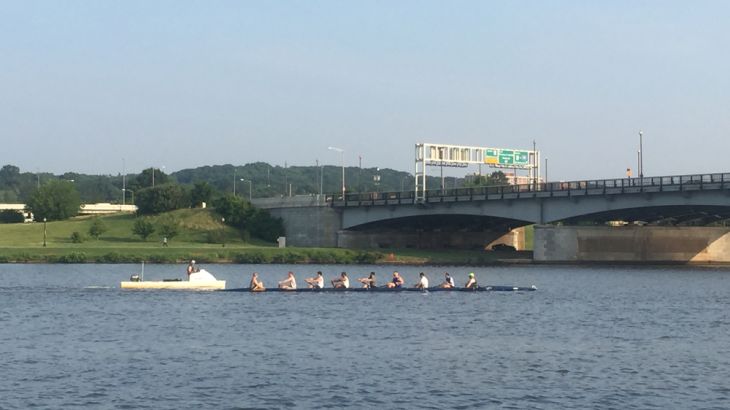Rowing on a toxic river of human waste and chemicals
Anacostia River has long been one of the US’ most polluted waterways but new tunnels should stop sewer overflows.

We are still in Washington DC and the sky is a confetti of stars in the early morning.
I’m on the docks of the Anacostia Community Boathouse. The setting on the Anacostia River would be picturesque if it weren’t for the rubbish we see bobbing on the water as the sun rises.
Keep reading
list of 4 itemsLost Futures
Photos: Greek valley that became a lake stirs drought debate
Botswana threatens to send 20,000 elephants to Germany
There are plastic bottles, Styrofoam and food wrappers on the surface.
Those are only the pollutants we can see. The water is so polluted that fishing and swimming are banned in the river.
But there are hundreds of us who row on the Anacostia from the boathouse. I’m part of DC Strokes, the United States’ oldest LGBTQ rowing club.
My coach, Patrick Ashley, takes me and my cameraman out on the water to film people rowing and get shots of the water.
Billions of litres of diluted human waste flow into the Anacostia each year out of a 19th-century sewage system that collects both sewage and rainwater and spews the overflow into the Anacostia when it’s past capacity, usually on days heavy with rain.
New sewage tunnels
Washington DC is building new tunnels beneath the city to reduce the amount of untreated sewage that ends up in the river.
The man who tests river sediment for toxic chemicals, Dev Murali, lists some of the toxins he’s found in the river: “Polyaromatic hydrocarbons, polychlorinated biphenyl, chlorine, and dioxin.”
Murali tells Al Jazeera he has a warning for the rowers and kayakers on the Anacostia: “Don’t fall in.”
For Ashley, the pollution in the river is always in the back of his head, but it’s a risk he takes. “We would rather row on a cleaner river,” he says.
“Definitely after rainstorms we’re more cautious about making sure we don’t get splashed or exposing ourselves to the river water.
“After a rainstorm it’s very obvious the colour of the river changes … There’s so much more trash. It’s not a pleasant experience,” Ashley says.
The new tunnels should be finished in 2025. But they don’t address cleaning up the toxins already in the river.
That’s not going to stop people from rowing or kayaking on the Anacostia.
For Paul Heaton, who also rows regularly on the Anacostia, the efforts are a good start. “It’s never pleasant to know that the river you’re rowing on is not as clean as it should be.”
But he tells Al Jazeera: “I’m encouraged by the steps that are being taken to reduce the sewage going into the Anacostia.”